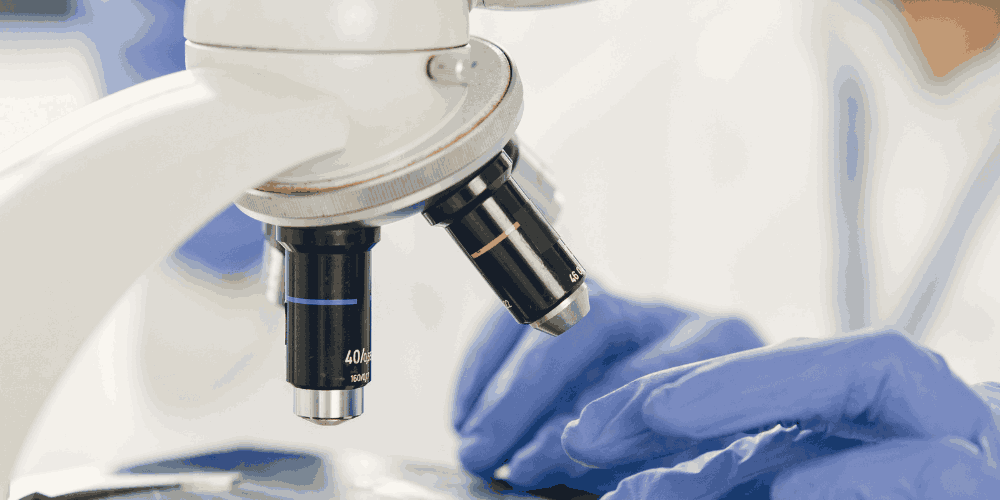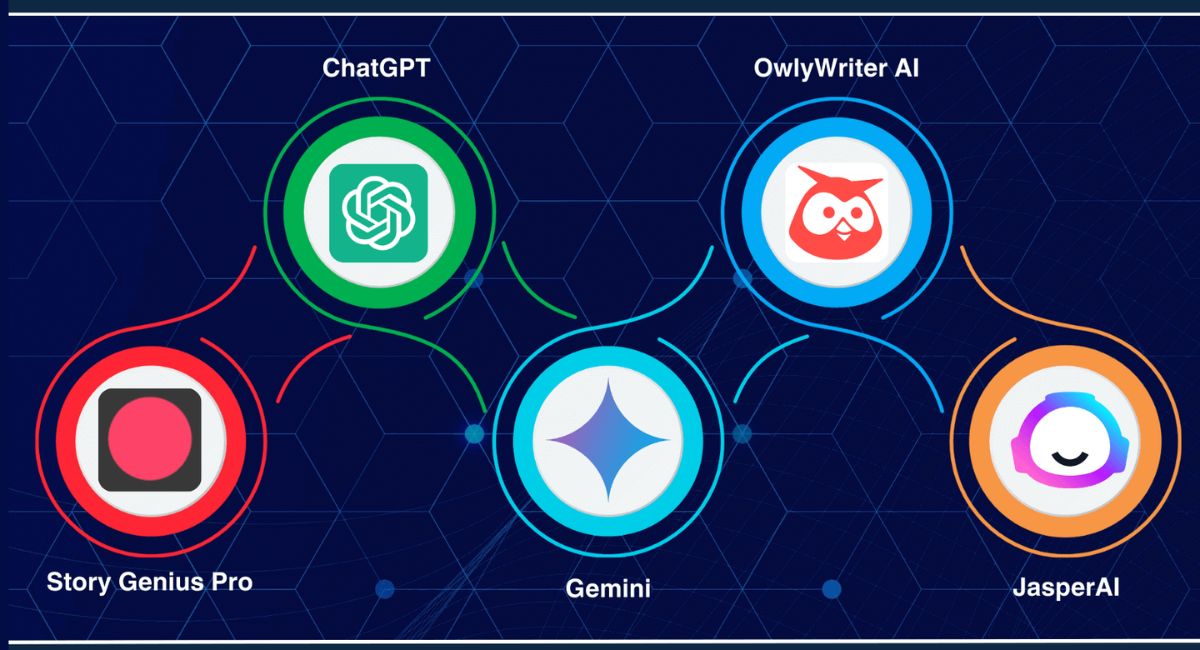Healthcare in 2025 doesn’t look like it did just a few years ago. What was once seen as cutting-edge telehealth, wearable devices, and AI-assisted diagnostics is now becoming standard practice.
The global health crisis accelerated digital transformation across the medical field, and now, we’re seeing the real results: smarter systems, faster diagnosis, more connected care, and better patient outcomes.
Read More: Digital Health Trends to Watch: How Tech Is Shaping Preventive Care
Why 2025 Is a Breakthrough Year for Healthcare Innovation
- Technology is solving longstanding challenges
Access to specialists, early diagnosis, and personalized treatments are no longer limited by geography or outdated systems. Tools powered by AI and machine learning are helping clinicians make faster, more accurate decisions. - Patient expectations have evolved
Post-pandemic, patients expect virtual consultations, transparency, real-time data, and proactive care. Healthcare providers must now deliver convenience, personalization, and trust all at once. - Investment in digital health is at an all-time high
Billions are being poured into healthcare startups, especially those focused on AI diagnostics, remote monitoring, robotics, and genomics. - Healthcare innovation 2025 is about more than tech
It’s a mindset shift. The focus is now on speed, prevention, personalized treatment, and patient empowerment. The goal is not just to treat illness but to anticipate and prevent it before it happens.
This blog breaks down the top innovations revolutionizing patient care in 2025 and what they mean for providers, patients, and the future of global health.
The Need for Innovation in 2025
The push for smarter healthcare systems isn’t just about convenience. It’s a response to urgent, global challenges. As healthcare systems around the world struggle to keep up, innovation has become a necessity rather than an option.
Healthcare Is Facing Global Pressure
- An aging population with complex needs
People are living longer but with more chronic conditions like diabetes, hypertension, and arthritis. Traditional care models can’t scale to meet the growing demand. - Shortage of skilled healthcare professionals
Hospitals and clinics are facing severe staff shortages, especially in rural or underserved regions. This gap is pushing the need for automation, remote monitoring, and AI-driven support tools. - Rising costs of treatment
From medications to surgeries, healthcare is becoming more expensive for both patients and providers. Innovation is key to improving efficiency and reducing unnecessary overhead. - Patients now expect digital-first care
Post-COVID, there’s little patience for long waits, endless paperwork, or outdated processes. Patients want telehealth, mobile access, faster results, and personalized attention. This shift is accelerating the momentum behind healthcare innovation in 2025.
Healthcare systems are under pressure. But with the right innovations, we’re seeing the rise of faster, fairer, and more scalable care across the globe.
Read More: Top 10 Healthcare Leaders in the USA – 2025
AI in Diagnostics and Early Detection
Artificial intelligence is redefining how medical diagnoses are made. In 2025, AI is no longer futuristic; it’s actively supporting doctors, radiologists, and researchers in detecting diseases earlier and more accurately.
Smarter, Faster, More Accurate Diagnoses
- AI models outperform humans in certain cases
Tools like Google Health AI and Aidoc can identify cancers, retinal diseases, and cardiac conditions faster and with greater precision. - Fewer diagnostic errors
AI reduces the chance of human error by analyzing medical imaging, lab reports, and patient history with high accuracy. - Faster turnaround from symptoms to treatment
AI can review patient data in minutes, helping clinicians deliver quicker decisions and improve outcomes. - Scalable solutions for underserved areas
Cloud-based diagnostic platforms bring expert-level analysis to remote and resource-limited clinics.
Here are some real-world tools leading healthcare innovation in 2025:
| Tool | Primary Use | Impact on Care |
| Aidoc | Radiology scan triage | Faster ER response, reduced overload |
| Google Health AI | Eye disease and cancer detection | High early-detection accuracy |
| Tempus | Cancer genomics | Personalized treatment plans |
| Butterfly iQ+ | Portable ultrasound | Real-time imaging in remote clinics |
With healthcare innovation 2025, AI is transforming diagnostics into a faster, more consistent, and more accessible experience for both patients and providers.
Read More: Natural Remedies for Insomnia That Actually Work
Remote Patient Monitoring and Virtual Care
In 2025, healthcare is no longer confined to hospital walls. Remote patient monitoring and virtual care have become essential components of modern treatment, especially for those managing chronic conditions or living in remote areas.
Health Tracking Without Hospital Visits
- Wearables and smart devices track real-time health data
Patients can monitor heart rate, glucose levels, blood pressure, and more from home using devices that sync with healthcare providers. - Doctors can intervene earlier
Abnormal readings trigger alerts, allowing clinicians to reach out before a health issue becomes serious. - Improved care for chronic conditions
Patients with diabetes, hypertension, and heart disease receive regular digital check-ins without visiting a clinic. - Lower readmission rates and better outcomes
Hospitals using remote monitoring report reduced ER visits, shorter stays, and increased patient satisfaction.
Healthcare innovation 2025 is all about meeting patients where they are. Virtual care and remote monitoring create more flexible, preventive, and continuous care models that improve lives.
Robotics in Surgery and Rehabilitation
Robotic technologies are no longer limited to experimental procedures. In 2025, robotics is actively enhancing surgical precision, reducing recovery times, and transforming rehabilitation therapy for patients around the world.
Precision and Recovery with Robotic Support
- Robotic-assisted surgeries improve outcomes
Systems like the da Vinci Surgical System enable minimally invasive procedures with greater accuracy and reduced risk. - Faster healing and fewer complications
Smaller incisions and precise movements mean patients experience less pain, shorter hospital stays, and lower infection risks. - Rehabilitation robots support mobility recovery
Exoskeletons and robotic limbs help patients regain movement after strokes, spinal injuries, or major surgeries. - Training and standardization of complex procedures
Surgeons use robotic systems to practice and perform high-risk surgeries with greater consistency and safety.
As part of healthcare innovation 2025, robotics is redefining what’s possible in both the operating room and physical therapy. It’s enabling safer procedures, better outcomes, and faster recoveries.
Read More: How to Build a Personal Brand That Attracts Startup Investors
Personalized Medicine and Genomic Testing
One-size-fits-all treatments are becoming a thing of the past. In 2025, personalized medicine is gaining momentum through advances in genetic testing and data-driven care, allowing treatments to be tailored to each individual’s unique biology.
Tailored Treatments Based on DNA
- Genetic profiling guides treatment decisions
By analyzing a patient’s DNA, doctors can prescribe medications that are more likely to work and avoid those that may cause side effects. - Predictive testing identifies health risks early
Patients can discover their predisposition to diseases like cancer, heart conditions, and neurological disorders, enabling early intervention. - Pharmacogenomics improves drug effectiveness
Medications are matched to a patient’s metabolism and genetic makeup, increasing treatment accuracy and reducing trial-and-error. - Cancer care becomes more targeted
Tumor DNA sequencing helps oncologists choose therapies that specifically attack cancer cells with fewer side effects.
With healthcare innovation 2025, medicine is no longer reactive. Personalized care is helping providers deliver treatments that are more effective, more efficient, and deeply aligned with each patient’s needs.
Read More: Digital Marketing Trends 2025: What Brands Need to Do Differently
Smart Medical Devices and Wearables
Technology that was once limited to hospitals is now being worn on our wrists, arms, and even inhalers. In 2025, smart medical devices are empowering patients and helping providers monitor health in real time.
Real-Time Health Monitoring for Everyone
- Wearables track key vitals continuously
Devices monitor heart rate, oxygen levels, glucose, and sleep patterns, giving users actionable insights into their daily health. - Doctors receive data remotely
Clinicians can track a patient’s vitals between appointments, allowing for faster response and better chronic care management. - Increased patient engagement
Wearables motivate users to stay active, take medications on time, and understand their health data through simple dashboards. - Supports early detection and prevention
Subtle changes in health can be spotted early, allowing for timely interventions that prevent more serious issues.
These popular smart devices are shaping healthcare innovation in 2025:
| Device | Functionality | Best For |
| Abbott FreeStyle Libre 3 | Continuous glucose monitoring | Diabetes management |
| Withings ScanWatch 2 | ECG and oxygen tracking | Heart and sleep health |
| Propeller Health Sensor | Smart inhaler with tracking | Asthma, COPD |
| Oura Ring Gen 4 | Sleep and readiness tracking | Wellness and recovery optimization |
Healthcare innovation 2025 is shifting the power of health monitoring from clinics to the individual. These smart tools create a bridge between patients and providers that’s continuous, convenient, and preventive.
Read More: Top 7 AI Tools Every Entrepreneur Should Use in 2025
Data Interoperability and Secure Health Records
Access to complete and accurate medical data can save lives. In 2025, the focus is on making health records secure, accessible, and seamlessly shared across systems, without compromising patient privacy.
Seamless Data Sharing Without Risk
- Electronic Health Records are becoming interoperable
Medical systems are now built to communicate with each other, reducing duplicate tests and improving care coordination. - Blockchain is improving security and trust
Some healthcare platforms are using blockchain to ensure that data is tamper-proof, transparent, and patient-controlled. - Patients gain more control over their data
Individuals can now view, manage, and share their own medical history through secure apps and platforms. - Data privacy regulations guide responsible innovation
Tools that comply with global standards like GDPR and HIPAA are becoming the norm, especially as AI-based tools handle sensitive information.
As part of healthcare innovation 2025, secure and unified data systems are helping providers offer smarter, faster, and more personalized care while giving patients ownership of their health information.
Read More: Most effective study tips for high school learners
Barriers to Adoption and Ethical Considerations
Even the most promising healthcare technologies face real-world challenges. In 2025, the focus isn’t just on what’s possible but on making innovation accessible, ethical, and secure for everyone.
What’s Holding Healthcare Innovation Back
Despite rapid progress, healthcare innovation in 2025 is not without its roadblocks. While technologies like AI diagnostics and smart wearables promise better care, not every provider or patient can access them equally. The journey from invention to real-world use involves financial, ethical, and systemic challenges.
- High cost of adoption for small practices
Many rural clinics and small hospitals lack the budget to invest in robotics, AI platforms, or genomics tools. These technologies are powerful but often come with high upfront costs. - Patient privacy and data usage concerns
As more health data is collected through wearables, mobile apps, and cloud platforms, patients want assurance that their information is safe, private, and not being misused. - Ethical concerns around AI and predictive analytics
Should AI tools be allowed to influence clinical decisions without human review? Can gene editing be used responsibly? These questions are still being debated by professionals and policymakers alike. - Limited access to digital tools in underserved areas
In many parts of the world, people still lack reliable internet or digital literacy. This creates a digital divide, where advanced healthcare is only available to the few—not the many.
Healthcare innovation in 2025 has the potential to improve millions of lives. But to make that promise a reality, innovators, providers, and governments must work together to ensure access, build trust, and use technology responsibly.
Read More: Top 5 Gaming Companies in the world by Revenue
What These Trends Mean for Patients and Providers
Healthcare innovation 2025 is more than just new tools; it’s reshaping how care is delivered, received, and experienced. These trends are closing gaps, improving trust, and creating more personalized and efficient systems for everyone involved.
Better Care Through Technology
Healthcare innovation in 2025 goes beyond exciting new tools. it’s about meaningful change in how care is delivered, experienced, and sustained. These trends aren’t just improving systems; they’re reshaping lives on both sides of the stethoscope.
- Faster and more accurate diagnoses
With AI and smart diagnostics, conditions are identified earlier and more reliably, leading to faster treatment and better health outcomes. - Lower hospital strain and less burnout
Automation and remote care reduce unnecessary visits, giving healthcare professionals more time and energy for complex cases. - Truly personalized and preventive care
Treatments are based on individual genetics, behavior, and real-time data, helping to prevent illness before it starts. - Stronger trust and engagement
Patients feel more in control of their health with wearable devices, real-time updates, and transparent data practices.
Healthcare innovation 2025 marks a shift from reactive care to proactive, connected, and patient-centered systems. It’s not just about efficiency; it’s about elevating the human experience in medicine.
Conclusion
Healthcare innovation in 2025 is not just a trend; it’s a transformation. With AI diagnostics, remote monitoring, personalized treatments, and smarter medical devices, care is becoming faster, more accurate, and more patient-centered than ever. But to fully realize the potential of these innovations, we must also address challenges around access, affordability, ethics, and digital literacy.
As we look ahead, one thing is clear: the future of healthcare is not just high-tech; it’s human-first. Embracing innovation responsibly will define how well we care for people in the years to come.
Frequently Asked Questions (FAQ)
1. What are the most impactful healthcare innovations in 2025?
Some of the most impactful innovations include AI-powered diagnostics, wearable health tech, personalized medicine, robotic-assisted surgeries, and remote patient monitoring.
2. How is AI used in healthcare innovation in 2025?
AI is helping doctors analyze medical scans, predict disease risks, automate administrative tasks, and deliver more accurate, timely diagnoses.
3. Why is 2025 considered a turning point for healthcare innovation?
Post-pandemic urgency, maturing technology, and rising patient expectations have made 2025 a year of accelerated adoption and meaningful transformation in healthcare systems.
4. What role do wearable devices play in modern healthcare?
Wearables like smartwatches and glucose monitors provide real-time data on vital signs, helping patients manage health conditions and doctors make faster decisions.
5. Are there risks with healthcare innovation in 2025?
Yes. Common risks include data privacy breaches, algorithm bias, unequal access to technology, and ethical concerns around AI and genetics.
6. How is personalized medicine being used today?
Doctors now use genetic testing and patient history to select the most effective medications and preventive strategies for individual patients.
7. How do smart devices improve patient care?
Smart devices allow for continuous health monitoring, early detection of complications, and better patient engagement between visits.
8. What is the biggest challenge to adopting new healthcare tech?
Cost and lack of infrastructure are major barriers, especially for smaller clinics and hospitals in rural or underserved areas.
9. What regulations will affect healthcare innovation in 2025?
Healthcare tech must comply with privacy laws like GDPR, HIPAA, and India’s DPDP Act, especially regarding AI-generated content and patient data usage.
10. How can patients benefit from healthcare innovation in 2025?
Patients can expect quicker diagnoses, more personalized treatments, remote access to care, and greater control over their health data and outcomes.















